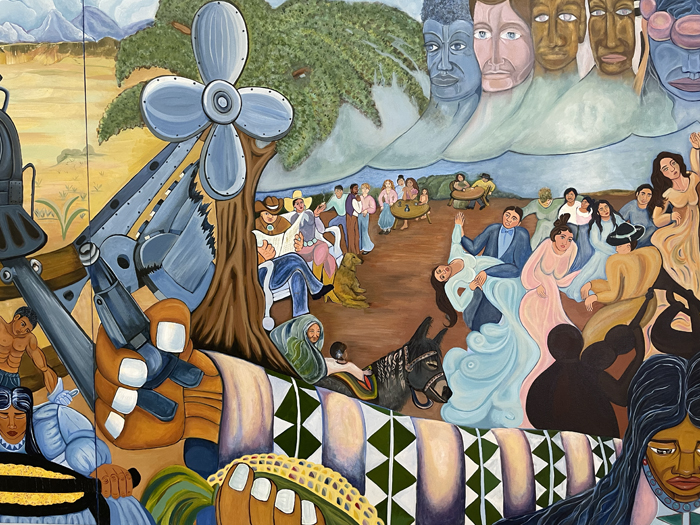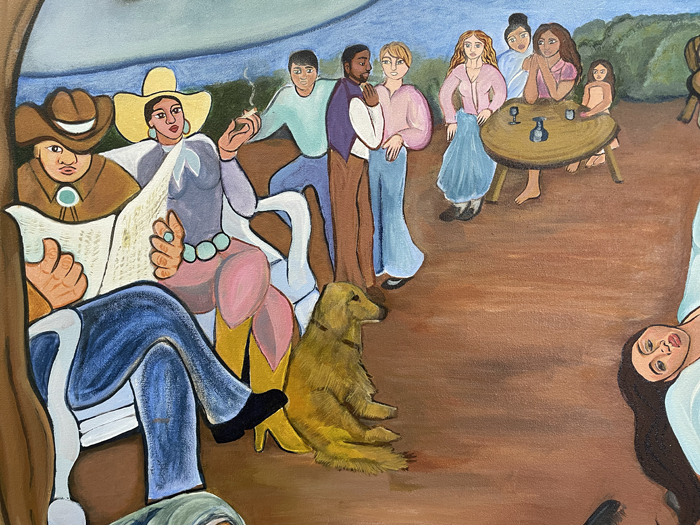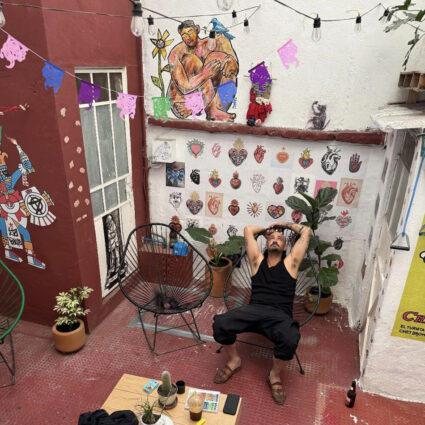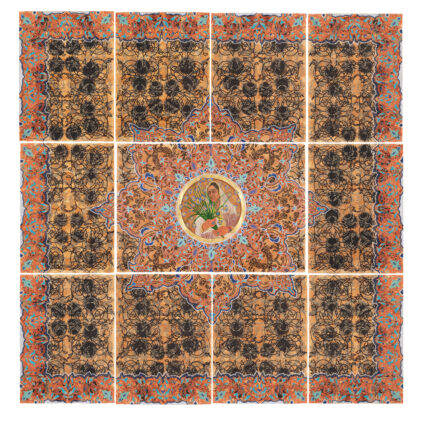Gilberto Guzmán, a lead artist of Santa Fe’s sharply contested and now defunct Multicultural mural, painted a new Multicultural that will be displayed in 2023.
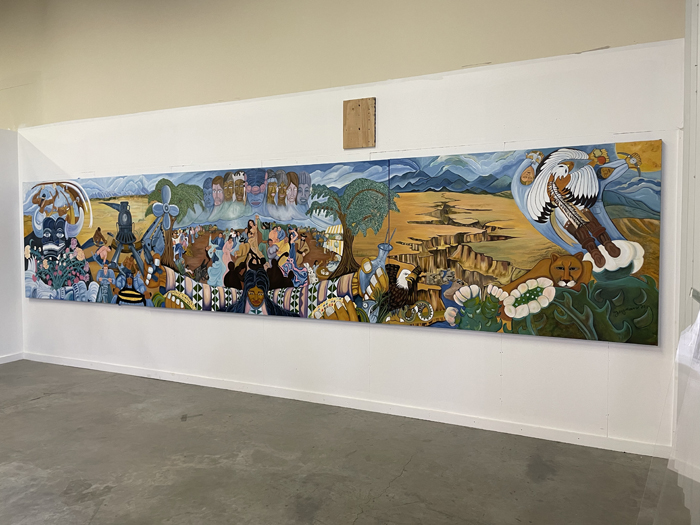
SANTA FE—Earlier this year, Gilberto Guzmán—one of the lead artists of the Multicultural mural (1980), a debated public art piece on Santa Fe’s Guadalupe Street that has since been cloaked—regenerated the artwork.
From April through early July 2022, the now nonagenarian creative, along with a team of artists, painted a replicated version of the mural. The acrylic on canvas piece, which will be available for public view next year, was unveiled during a small media gathering in Santa Fe on October 3.
Multicultural (2022) will hang in front of a new educational classroom at the New Mexico Museum of Art Vladem Contemporary that’s now scheduled to open early summer 2023, says Mark White, New Mexico Museum of Art executive director. While the original mural measured approximately (according to White) 100 feet in length, the current Multicultural, a work in three panels, is about a quarter of the original size, at twenty-four feet long and five feet tall.
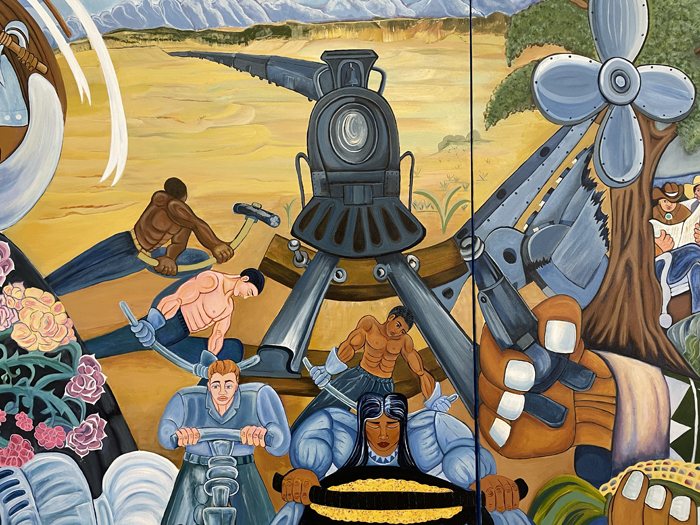
The 1980 mural visually represented New Mexico’s cultural diversity, and became especially beloved (and fought for) when the New Mexico Museum of Art announced plans to expand its contemporary art wing. The public art piece, which has been permanently erased by the in-construction Vladem Contemporary, featured touches by David Bradley (Minnesota Chippewa), Rosemary Stearns, Cassandra Mains, Linda Lomahaftewa (Hopi and Choctaw), and the late Zara Kriegstein, who is often forgotten whenever the mural is mentioned, discussed, and argued.
The new artwork, like the first piece, included contributions from Institute of American Indian Arts students and professional artists. Along with Guzmán (who turned ninety years old on October 10), Multicultural artists include Patricia M. Burks, Christian Gering (Katishtya/Pueblo of San Felipe and Pi’pil), and Simona Rael.
“What stands out to me is the movement,” says Gering, who attended the October 3 event, about the new artwork that’s a close rendering of the original. “Not only the physicality, the people dancing in the middle of the flowing river, the train coming in, but the movement in relation to the intergenerational connection that [Guzmán] is trying to portray.”
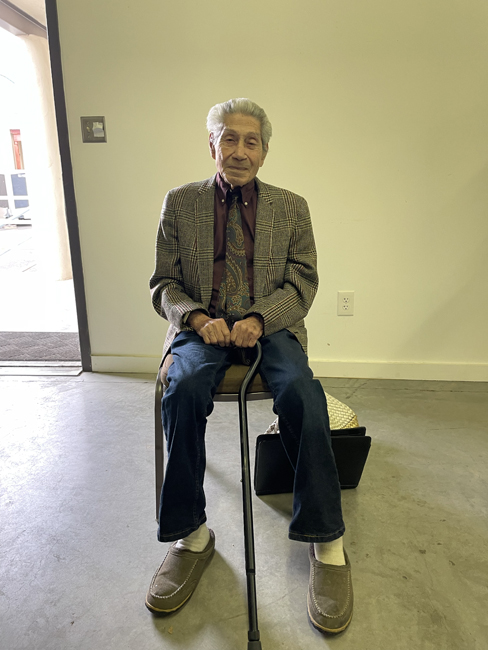
“When we were making this, it was a celebration, a return back to our ancestral stories, and a deeper connection in relation to us being artists to figure out how we put intention behind our brushstrokes and how we are looking to pay homage to Mr. Guzmán,” says Gering. “It’s a beautiful project and it was a wonderful time.”
The Vladem will include an informational kiosk with historical materials about the mural. The cultural institution will also feature an augmented reality component on the outside of the building—a QR code and smart device will allow visitors to view the mural on the Guadalupe Street side of the Santa Fe Railyard art space. (Museum officials are debating whether to include a 1990 photograph of the first mural or the new Multicultural.)
Guzmán was the first to start painting Multicultural, and those hues and strokes would eventually become a corn goddess, a figure in Indigenous cultures that’s responsible for what many people view as a life-sustaining food source, ceremonial object, and gift from the Great Spirit.
For Guzmán, Multicultural not only evokes the visual lifeforce of the original mural, but the piece also acts as a celebration of a new crop of diverse, multi-generational collaborators, who painted an artwork that’s meant for all.
“When we picked up our brushes, we became equal,” says Guzmán.






